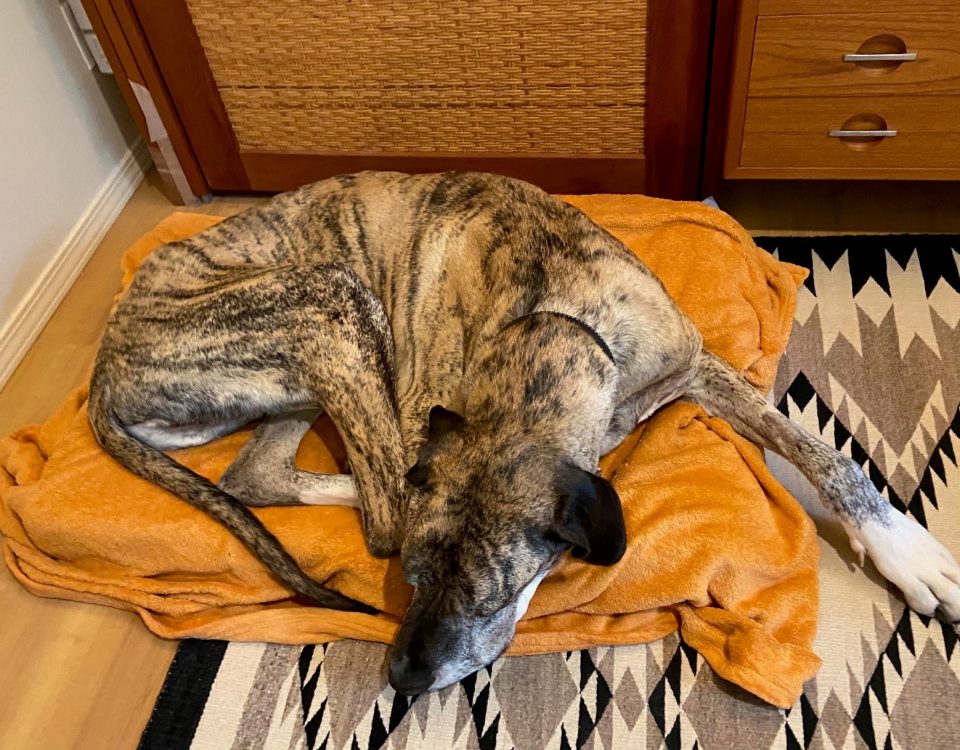Dystonia
May 14, 2012Right, Left, Right
July 15, 2012Parkinson’s and Yoga: Read the Label
 A life lesson I continue to learn from yoga is to be present, to be right here with the ease as well as the struggles. The breezy summer days of fluidity and balance – in Parkinson’s, the ‘on’ times – meld my thoughts with the moment. My mind, however, travels elsewhere, away from the bitterness of the icy mornings, the afternoons and evenings that are ‘off.’
A life lesson I continue to learn from yoga is to be present, to be right here with the ease as well as the struggles. The breezy summer days of fluidity and balance – in Parkinson’s, the ‘on’ times – meld my thoughts with the moment. My mind, however, travels elsewhere, away from the bitterness of the icy mornings, the afternoons and evenings that are ‘off.’
When I’m on, my awareness flows as freely as my movement. Off is another story. I might be out at the gym, walking the dog, attending school events when my medication dose wanes. I resemble our pet tortoise: slow, awkward, and behind glass for all to see. When being out coincides with being off, I try to bring my attention to my breath, to the steps of each step. My focus, however, tends to toggle between the efforts of forward motion and a mental banter with onlookers: It’s Parkinson’s. Not drunk. I can walk fast, just not right now.
I often wonder if a label would work, a Parkinson’s ID tag. This bright, eye-catching medical alert bracelet on steroids would provide bystanders with at-a-glance flashes of information that quickly categorize why I’m moving – or not moving – the way I do.
Perhaps it’s an armband in highlighter yellow – to color-coordinate with my Sinamet – embroidered with Got Dopamine? Or maybe I’ll replace my necklaces with dog tags. Etched on the front of the silver pendant: Movement Challenged. The smaller print on the back Not To Worry: She Limps But She Knows Way Home.
Dressed in PD bling clarifies that my gimpy gait is not the result of a few too many at the bar. Accessorized while at the grocery store means that fellow shoppers no longer need to wonder how at one moment I can zip down the frozen food aisle and a few ticks of the clock later, I shuffle through the produce section leaning on the cart. And while a sandwich sign — LADY WITH PARKINSON’S — might prove an embarrassing fashion statement to my son, the label might just be enough to satisfy his classmates’ curiosities about Mom’s weird walk.
Labels. We may not like them, but they provide an essential tool to identifying our worlds, the people and things around us. We teach our children before they move about their surroundings to define what’s in them: Dadda, kitty, blanket, cup. From vocabulary tests to lists of ingredients, we learn, use and need names. Even in PD. In the effort to better understand the world of Parkinson’s, the Michael J. Fox Foundation is conducting a broad-based clinical study called the Parkinson’s Progression Markers Initiative (PPMI). As researchers label and categorize more and more symptoms, treatment and early detection methods improve.
An online discussion among a group of therapeutic yoga instructors recently touched on the label theme. This group shares ideas and best practices for adapting poses or sequences that address various conditions. The first posting expressed concern about referring to students by their diagnoses, as in, ‘the woman who has MS,’ or ‘the cancer patient.’ Several paragraphs later, she settled on with, as in, the woman with MS. While this online discussion displays sensitivity, it’s not truly student-focused to me. Firstly, this method isn’t inclusive. The labeling style wouldn’t extend to a stroke patient or paraplegic. Do we settle on different references for them?
Secondly, we may not like the diagnostic term but it gives us a standard set of definitions across professions which may help educate us to the needs of our students. In addition, if we get to know our students’ name preferences – from Person with Parkinson’s (PWP) to ‘Living with Parkinson’s to Parkinson’s patient to Call Me Stumbles – we’ll get to know our students a little better. This, too, helps us meet their needs.
In either case, labels are tools we can use to guide our students. The standard term or the name the student chooses are better tools than labels we assign.
Another posting on a different yoga site noted that teachers need to show compassion for students with Parkinson’s. I want to rewrite this as “… yoga teachers . . . show compassion for students.” Why single out a population where compassion is concerned? The Parkinson’s label here provides no identifying information. I trust that is not suggesting that teachers feel sorry for Parkinson’s students. Though the entry does go on to the description of a man who “suffers from Parkinson’s.” Again, this offers no tangible identifying quality for teachers to use. It also not only connects an emotion to the condition, it’s not student-focused because it names an emotion the writer/teacher assumes.
It is okay to label, categorize, tag. In fact, doing so can be useful.
When the terms ‘on’ and ‘off’ set off a whirlwind of emotions in me, my mind follows along the blustery storm route. What yoga continues to teach me about being present even in the midst of these labels is not to attach a response or reaction to them. When we step back from trying to redefine a standard because of an emotional attachment, when we step back and let descriptions guide us, when I can step back from that connection, on or off, I’m right here.


